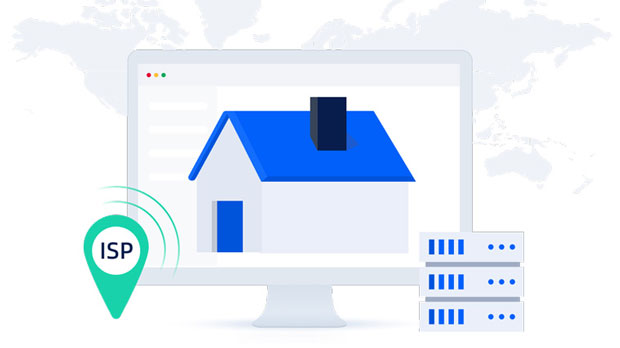When it comes to purchasing reverse proxy ips, choosing the right provider is crucial to ensuring a seamless and secure experience. Low-quality proxy services can compromise your online activities, expose you to security risks, and waste your resources. In this article, we will explore how to identify and avoid buying low-quality reverse proxy ips. We will provide insights on what to look for in a reliable proxy service, red flags to watch out for, and how to make informed decisions. This comprehensive guide will help you save time, money, and ensure the quality and effectiveness of your online tasks. Understanding Reverse Proxy IPsBefore diving into the specifics of avoiding low-quality reverse proxy IPs, it is essential to understand what they are and how they work. A reverse proxy IP acts as an intermediary between your device and the internet. When using a reverse proxy, your internet traffic is routed through a proxy server, which masks your IP address. This allows for enhanced privacy, security, and sometimes faster performance. Reverse proxy IPs are commonly used in various industries, including web scraping, SEO, and data collection.While reverse proxies provide many benefits, not all proxy services are created equal. There is a significant difference in quality between high-end proxy services and subpar providers. Low-quality proxies can lead to slower speeds, higher chances of detection, security vulnerabilities, and even potential data breaches.Key Features of Quality Reverse Proxy IPsTo avoid purchasing low-quality reverse proxy IPs, it's important to understand the characteristics of high-quality proxies. Here are several key features to look for:1. Reliability and Uptime A reliable proxy provider should offer a high uptime rate, ensuring that your reverse proxy service is available whenever you need it. Look for providers who have a track record of consistent uptime. A proxy service with frequent downtime will severely disrupt your activities and waste time and resources.2. Speed and Performance High-quality reverse proxy IPs should offer fast response times and smooth performance. Slow proxies can negatively impact tasks like web scraping, SEO monitoring, or content delivery. Before making a purchase, test the proxy speed to make sure it meets your performance requirements.3. Security Features Security is a top priority when it comes to using reverse proxies. Ensure that the provider offers strong encryption, secure data transmission, and protection against IP leakage. Low-quality proxies may not have these features, leaving your online activity vulnerable to hackers or data breaches.4. Anonymous IPs A reliable proxy service should offer anonymous IP addresses that ensure your online activities are not traced back to you. Some low-quality proxy providers may provide IPs that are easily identifiable, risking your privacy and exposing you to potential risks.5. Geographic Diversity Reverse proxies from a high-quality provider should offer a wide range of IP locations. Geographic diversity ensures you can bypass geo-blocked content and access restricted websites from different countries. If the provider only offers proxies from a limited set of locations, it may not be sufficient for your needs.Red Flags: Signs of Low-Quality Reverse Proxy IP ProvidersIdentifying low-quality reverse proxy IP providers is essential to avoid wasting time and money. Here are some red flags that should raise concerns when choosing a proxy service:1. Lack of Transparency If the provider is vague about their proxy IP sources, it is a major red flag. Quality providers are transparent about the origin of their proxies, whether they are data center-based, residential, or mobile proxies. If they are unwilling to provide this information, it may indicate poor-quality services.2. Unrealistic Pricing If a reverse proxy provider offers extremely low prices, it might be tempting, but it is often a sign of poor-quality proxies. Low-cost proxies are often unreliable, slow, and overused. Investing in such services may end up costing more in the long run, due to potential issues such as downtime, slow speeds, and detection by websites.3. High Detection Rates A good reverse proxy service should ensure that their proxies are not easily detected by websites. If you find that a provider’s proxies are frequently flagged or blocked by target websites, it indicates low-quality proxies. Look for a provider with a strong track record of bypassing CAPTCHAs, IP bans, and other security measures.4. No Customer Support The absence of efficient customer support is another warning sign. Low-quality proxy services often lack responsive customer support, leaving users frustrated when issues arise. A good provider should offer 24/7 support via multiple channels, such as live chat, email, or phone.5. Limited or No Trial Period High-quality providers typically offer a trial period or a money-back guarantee. This allows you to test the service and see if it meets your requirements. If a provider does not offer a trial or any form of guarantee, it could be a sign that their service does not meet high standards.How to Make an Informed DecisionMaking an informed decision requires research and careful consideration. Here are steps to help you avoid purchasing low-quality reverse proxy IPs:1. Research the Provider Before purchasing a reverse proxy, conduct thorough research about the provider. Look for reviews, testimonials, and case studies. Seek feedback from other users to gauge their experiences with the service. Trustworthy providers often have a solid reputation in the industry.2. Test the Service Many quality proxy providers offer free trials or demo versions. Take advantage of these opportunities to test the proxies and assess their performance, speed, and reliability. This will give you a better understanding of the service before committing to a long-term purchase.3. Ask for a Trial If a provider does not offer a free trial, ask for one. Quality services will usually accommodate such requests, as they are confident in their product. This trial period will allow you to test the proxies for your specific use case and ensure that they meet your expectations.4. Compare Multiple Providers Don’t settle for the first provider you find. Compare multiple proxy services to understand what they offer in terms of pricing, performance, security, and customer support. A price comparison and feature evaluation will help you find the best option.5. Read the Terms and Conditions Carefully read the terms and conditions of the proxy provider. Understand their refund policy, uptime guarantee, and any additional charges that may arise. This will ensure you are not caught off guard later on.Conclusion: Ensuring Quality and Performance in Reverse Proxy IPsAvoiding low-quality reverse proxy IPs is essential for ensuring that your online activities are smooth, secure, and effective. By understanding the key features of quality proxies, recognizing red flags, and conducting thorough research, you can make an informed decision and choose a provider that meets your needs. Always prioritize reliability, performance, security, and customer support when selecting a reverse proxy service. By doing so, you can save time, money, and resources, and enjoy a seamless experience with your online projects.
Mar 27, 2025
![arrow]()




























































